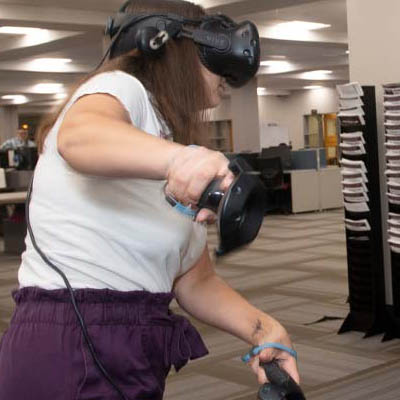The Virtual Reality and Gaming Studio located in the Mitchell Memorial Library's MaxxSouth Digital Media Center offers patrons an opportunity to learn, play, create and explore in a trendsetting new way.
The mixed reality includes two HTC Vives, three Oculus Rifts and two Hololenses. The Vive and Oculus Rift are virtual reality devices that will completely immerse a person in virtual worlds they access through various software programs. The Hololens is an augmented reality device, meaning a person will see their actual environment combined with virtual aspects created by the software program they use.
In addition to the seven devices, the studio also offers two computer workstations with software programs designed to let patrons create their own virtual reality programs. The development computers provide students with the ability to build their own virtual reality and augmented reality experiences. The computers offer Unity, Visual Studio, and 3D Studio Max which allows students to create VR/AR tools, develop software, and create art assets. With growing interest in VR/AR applications for education, training, real-time assistance, and entertainment, the mixed reality studio makes publicly available the tools and systems students need to build their skills in these areas.
The studio is open to individuals and can also be used by professors to enhance their teaching.
VR Course Integration
The following are examples of faculty currently working with the Media Center to incorporate the use of the technology into their courses.

